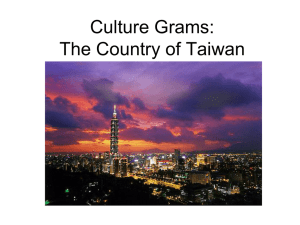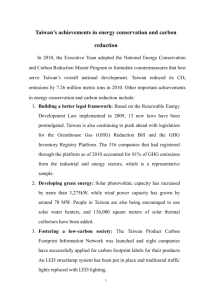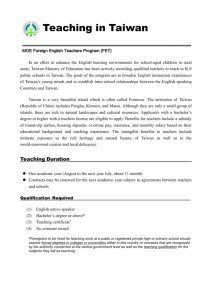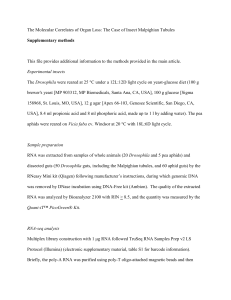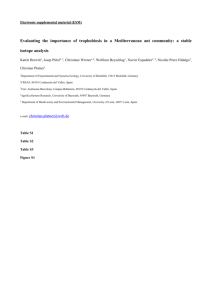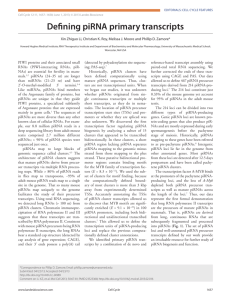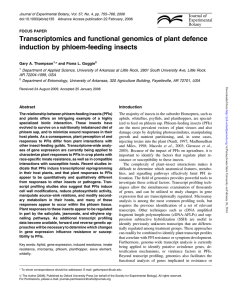發育再生研究快報 2011 Dec 12 Expansion of Genes Encoding
advertisement
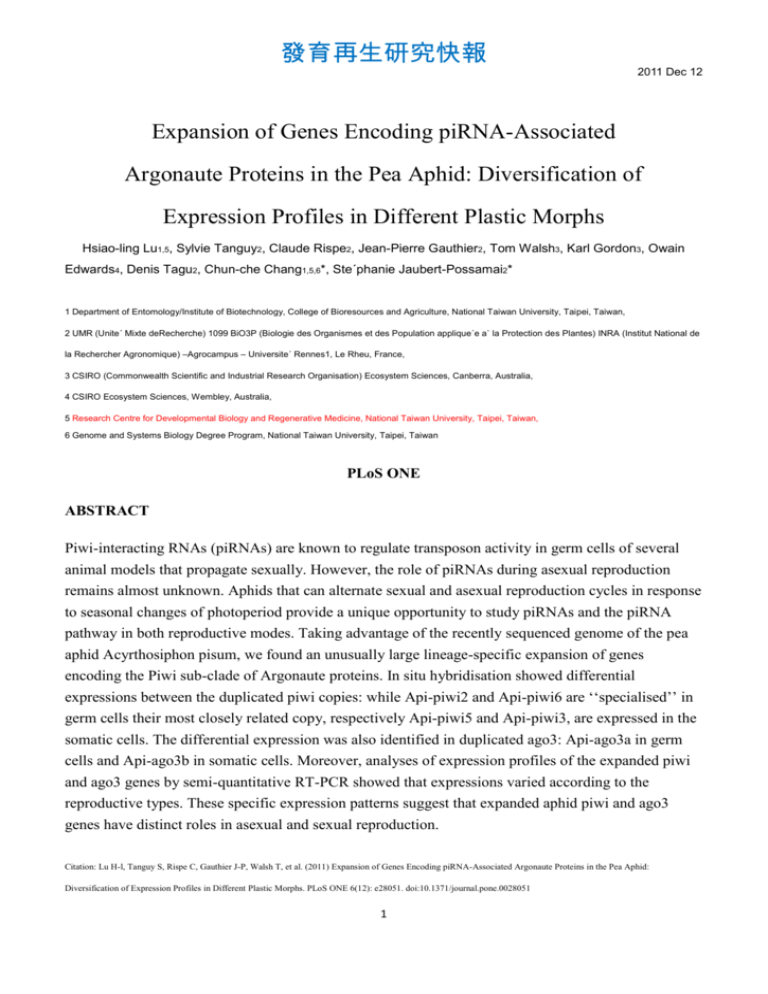
發育再生研究快報 2011 Dec 12 Expansion of Genes Encoding piRNA-Associated Argonaute Proteins in the Pea Aphid: Diversification of Expression Profiles in Different Plastic Morphs Hsiao-ling Lu1,5, Sylvie Tanguy2, Claude Rispe2, Jean-Pierre Gauthier2, Tom Walsh3, Karl Gordon3, Owain Edwards4, Denis Tagu2, Chun-che Chang1,5,6*, Ste´phanie Jaubert-Possamai2* 1 Department of Entomology/Institute of Biotechnology, College of Bioresources and Agriculture, National Taiwan University, Taipei, Taiwan, 2 UMR (Unite´ Mixte deRecherche) 1099 BiO3P (Biologie des Organismes et des Population applique´e a` la Protection des Plantes) INRA (Institut National de la Rechercher Agronomique) –Agrocampus – Universite´ Rennes1, Le Rheu, France, 3 CSIRO (Commonwealth Scientific and Industrial Research Organisation) Ecosystem Sciences, Canberra, Australia, 4 CSIRO Ecosystem Sciences, Wembley, Australia, 5 Research Centre for Developmental Biology and Regenerative Medicine, National Taiwan University, Taipei, Taiwan, 6 Genome and Systems Biology Degree Program, National Taiwan University, Taipei, Taiwan PLoS ONE ABSTRACT Piwi-interacting RNAs (piRNAs) are known to regulate transposon activity in germ cells of several animal models that propagate sexually. However, the role of piRNAs during asexual reproduction remains almost unknown. Aphids that can alternate sexual and asexual reproduction cycles in response to seasonal changes of photoperiod provide a unique opportunity to study piRNAs and the piRNA pathway in both reproductive modes. Taking advantage of the recently sequenced genome of the pea aphid Acyrthosiphon pisum, we found an unusually large lineage-specific expansion of genes encoding the Piwi sub-clade of Argonaute proteins. In situ hybridisation showed differential expressions between the duplicated piwi copies: while Api-piwi2 and Api-piwi6 are ‘‘specialised’’ in germ cells their most closely related copy, respectively Api-piwi5 and Api-piwi3, are expressed in the somatic cells. The differential expression was also identified in duplicated ago3: Api-ago3a in germ cells and Api-ago3b in somatic cells. Moreover, analyses of expression profiles of the expanded piwi and ago3 genes by semi-quantitative RT-PCR showed that expressions varied according to the reproductive types. These specific expression patterns suggest that expanded aphid piwi and ago3 genes have distinct roles in asexual and sexual reproduction. Citation: Lu H-l, Tanguy S, Rispe C, Gauthier J-P, Walsh T, et al. (2011) Expansion of Genes Encoding piRNA-Associated Argonaute Proteins in the Pea Aphid: Diversification of Expression Profiles in Different Plastic Morphs. PLoS ONE 6(12): e28051. doi:10.1371/journal.pone.0028051 1 Editor: Guy Smagghe, Ghent University, Belgium Received July 4, 2011; Accepted October 31, 2011; Published December 5, 2011 Copyright: _ 2011 Lu et al. This is an open-access article distributed under the terms of the Creative Commons Attribution License, which permits unrestricted use, distribution, and reproduction in any medium, provided the original author and source are credited. Funding: This work was supported by the National Science Council (97-2313-B-002-035-MY3, web site: http://web1.nsc.gov.tw/mp.aspx?mp = 7) and the Bureau of Animal and Plant Health Inspection and Quarantine (BAPHIQ) of the Agricultural Council (97-1.1.1-B1(6); 98-1.1.1-B1(2); 100 -9.2.1- B1(6)), web site: http://www. baphiq.gov.tw/mp.asp?mp = 2). The funders had no role in study design, data collection and analysis, decision to publish, or preparation of the manuscript. Competing Interests: The authors have declared that no competing interests exist. * E-mail: chunche@ntu.edu.tw (C-CC); Stephanie.Jaubert@rennes.inra.fr (SJ-P) 聯絡人:劉麗芳 發育生物學與再生醫學研究中心 Research Center of Developmental Biology and Regenerative Medicine Tel:02-23123456 轉 71632 E-mail:polocz9082@yahoo.com.tw 100 台北市中山南路 8 號 兒童醫療大樓 16 樓 P16022 室 ================================================================ 2




